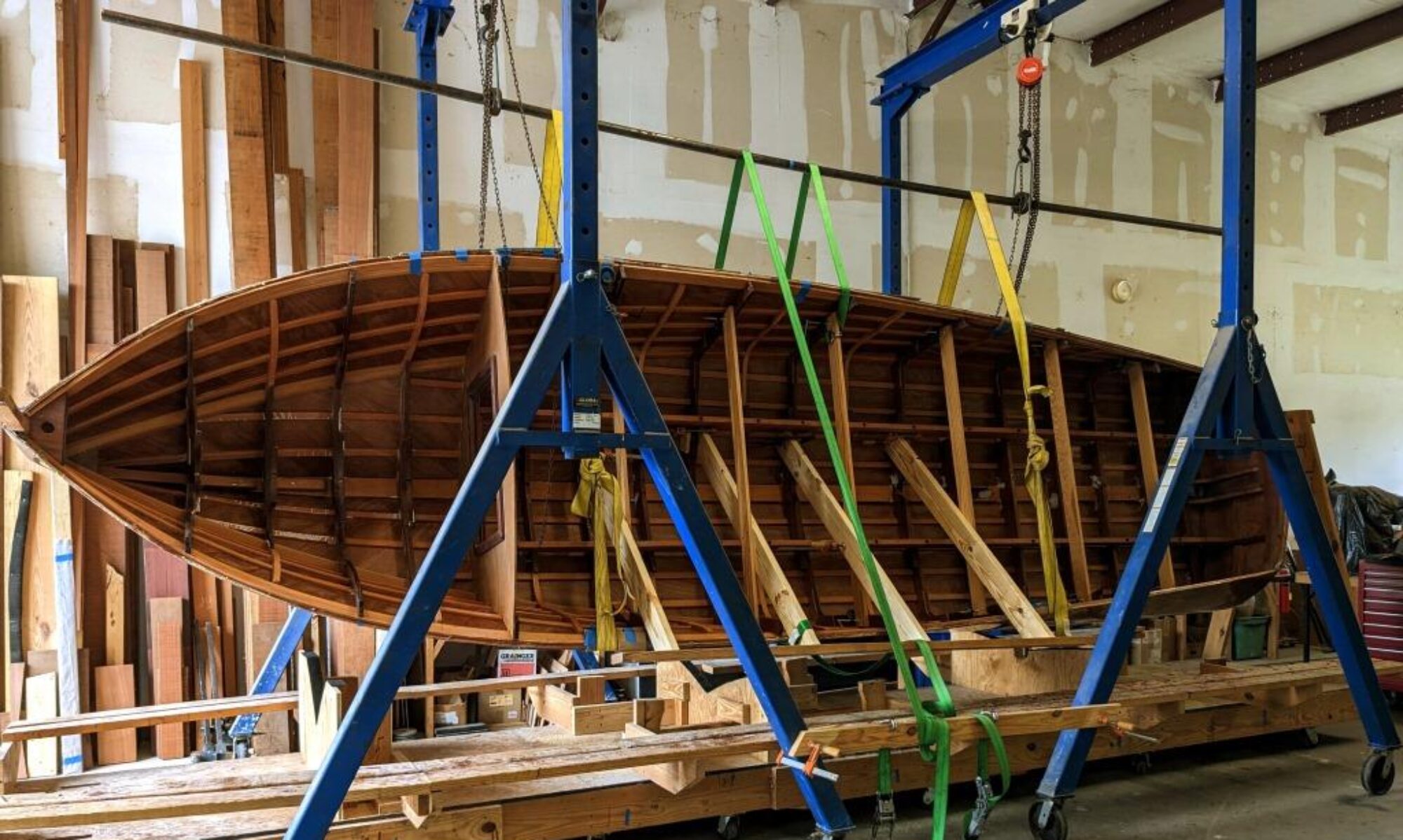

Remember long ago (by now it seems long ago to me) when I talked about the painstaking process of making patterns out of cheap 1/8″ luan? My process was to use the 1/8″ luan to make my original patterns because it’s so pliable and easy to carve to shape.
But by now, you realize how much time and energy is invested in laying up the mahogany and holly blanks and laminating them to the backing board. It’s too risky to use such a thin pattern to cut out those blanks. One slip of the router, and you’re starting over on those layups. So I used the original patterns to first cut out new patterns of 1/2″ thick birch plywood. The 1/2″ thick plywood, with no voids is much more secure for cutting the blanks.

Nevertheless, it was a bit nerve-wracking. The thickness of the birch plywood helped a lot. I clamped it to the layup, checked the alignment of the holly stripes with the center panels, and traced the outline with a pencil. Then unclamp it and cut about 1/8″ outside the line with a jigsaw. Clamp it back up and do the finish cut with the router.

The final piece of the puzzle fell into place when I figured out how I was going to make sure the two outboard pieces would be mirror images. Simply index a few of the holly strips from the first piece on the edge of the pattern. Then set that index line over the stripe on the second piece. Voila!
Take a moment to scroll back up and look at the finished pieces, somewhat cleaned up from the glue, etc. We’ll talk about those blue tape lines down the road. They’ll remain a mystery for now…
